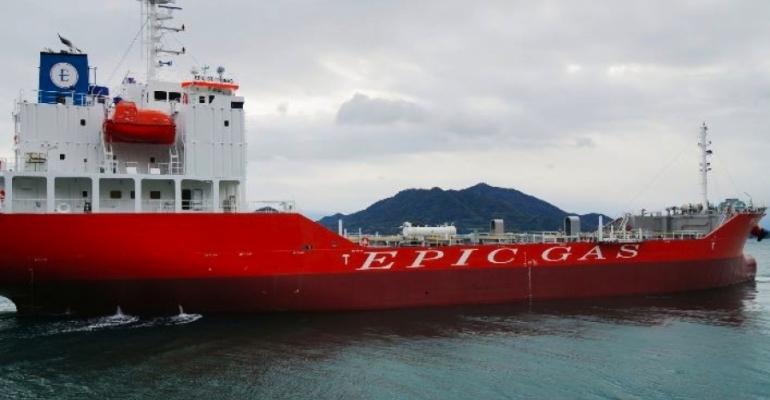The sector saw a surge in 2013 - 2015 as US exports boomed, with greatly growing Asian import demand, but crashed in 2016 - 2017 as the resultant burst of vessel ordering brought about a severe overtonnaging situation.
Statistics presented by consultants NGLS show just shy of 100m tonnes of cargo traded in 2017. Middle East origins, nearly 39m tonnes, still dominate the export leaderboard, but show the “Americas” share increasing most rapidly over the past few years. Conversely the import side of the cargo matrix shows the biggest share, and largest incremental gains, coming from product moving into the Asia - Pacific region.
Growth in demand has come from unexpected places, as well. As the market has evolved through 2017 and into 2018, an NGLS analysis shows that “arbitrage” margins were impinged in 2017, as US gas prices (Mount Belvieu pricing) strengthened, bringing about a decline in cracking demand. On the Capital Link webinar, John Lycouras, ceo of Dorian LPG, noted that: “The surprise this year [2017] was India, which surpassed Japan in imports of LPG. Indonesia has been one of the major big importers of LPG that was not there before.”
As petrochemical demand grows, increased deployments of the Propane dehydrogenation, or PDH, a process for producing the all-important propylene (with lower costs than competing technologies), has led to gains in propane demand, with NGLS noting that “PDH is much more significant in the East.”
Lycouris, concurred, tying new PDH plants in Asia to “a continuation of strong demand for LPG.” On the same webcast, Charles Maltby, ceo of owner Epic Gas said: “The surprise has been the ramp back up of propylene imports into China…and that’s important for pressurized LPG vessel.”
These developments present the backdrop for Jefferies & Co’s “Buy” recommendation on Stealth Gas. The firm’s shipping equities analyst, Randy Giveans, wrote in a late February investment recommendations: “With LPG shipping rates increasing across all asset classes in recent months, the charter rates in the small LPG asset class have rallied to the highest level since 2Q14, and we believe the small LPG shipping market is poised to improve further in the coming months. Volatility in the market has led to a low share price/net asset value for Stealth Gas (and for others).
Forecasting future demand for LPG moves is a highly complicated business, with NGLS saying, in the Evercore/ ISI presentation, that: “US production economics will dictate global LPG growth,” adding that pricing and arbitrages will depend on a complex array of economic factors differentiated for propane versus butane.
One facet of the compressed arbitrage margins is the potential move to more coverage of shipping under term charters. Peder Nicolai Jarlsby, an analyst at Fearnley Securities, regarding the likelihood of more contract and COA focus from large operators as commodity pricing differentials have stabilized. Dorian’s
Lycouras said: “I think the larger players would probably opt for more contract coverage where one can use logistics and vessel reliability to pick up cargoes from various places…I think that contract is probably the best way to go forward.”
Copyright © 2024. All rights reserved. Seatrade, a trading name of Informa Markets (UK) Limited. Add Seatrade Maritime News to your Google News feed.


